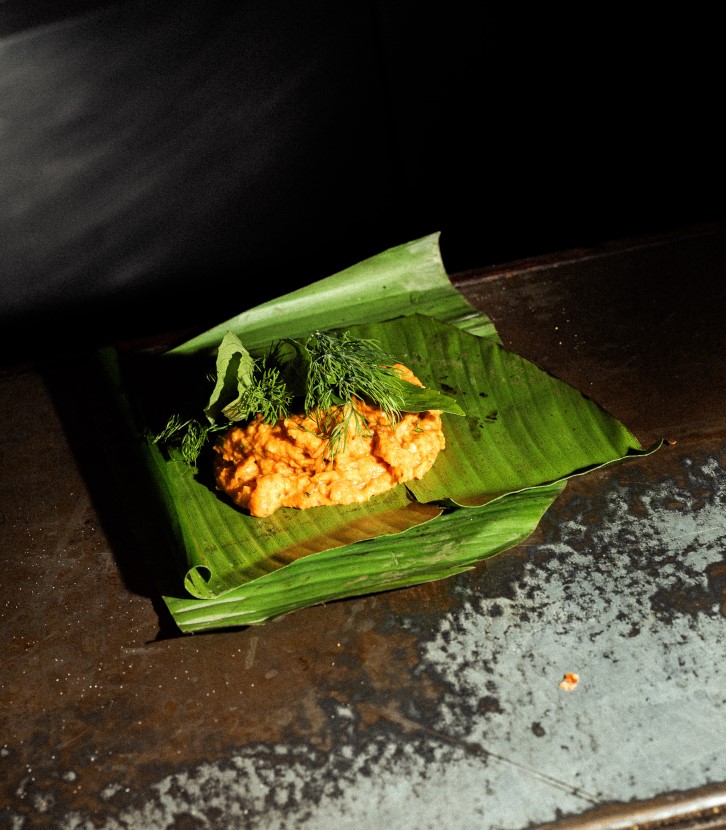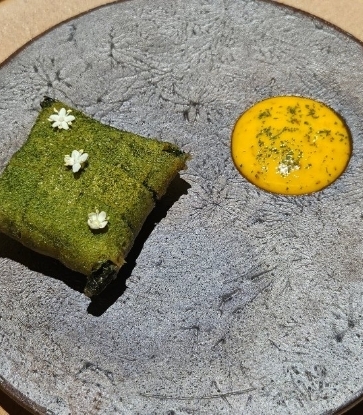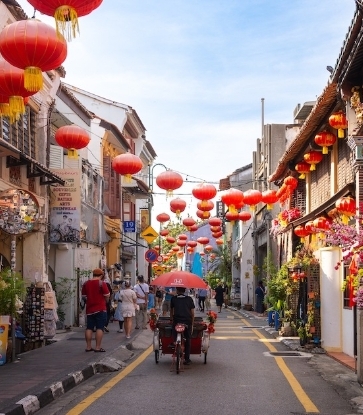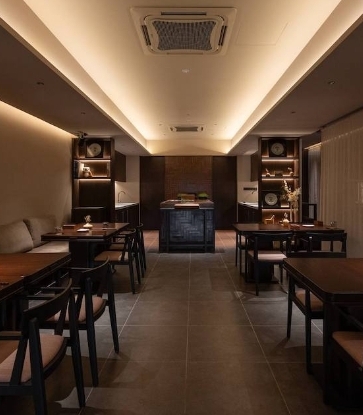Malaysia's Malay heritage dishes are a vibrant representation of the country's rich culinary tapestry. The cuisine is renowned for its bold use of aromatic spices such as lemongrass, ginger, galangal, and turmeric, which lend distinct flavour profiles to the culture's cooking.
There is also a ton of cultural significance attached to Malay heritage dishes. Heritage, as a whole, is not static; instead, heritage constantly evolves and lives on, with every generation breathing new life into it.
As Malaysia continues to grow and embrace modernity, these dishes reflect the soul of the archipelago and encapsulate the country's rich history, traditions, and unwavering love for good food.
Congkak
Bib GourmandMICHELIN Guide Kuala Lumpur 2023
Nasi Ambeng
The unique aspect of Nasi Ambeng (pictured in the header image above) is its presentation, as all the dishes are arranged in a circular pattern on a tray lined with banana leaves, creating a visually inviting feast.
It is believed that the dish was brought to Malaysia by Javanese immigrants who settled in the country centuries ago. Over time, it has assimilated into the Malay culture, mainly found in the states of Johor, Selangor, and Perak.
According to Congkak's executive chef, Firdaus Daud, Nasi Ambeng symbolises unity, harmony, and togetherness, as communities gather around the tray and partake in the flavourful array of dishes. "This fosters a sense of camaraderie,” he adds. Congkak's hallmark dish is Nasi Ambeng, serving the largest of its kind in Kuala Lumpur with up to 18 varieties.

Rendang Tok
Rendang Tok was brought to Malaysia by the Minangkabau settlers when they migrated to the Malay peninsula from West Sumatra, Indonesia.
Its thicker and drier consistency sets Rendang Tok apart from other rendang variations. Daud shares more about the dish: "Rendang Tok is a meat dish that has been slow-cooked and then braised in coconut milk that has been seasoned with spices. The slow reduction of the sauce results in a concentrated, rich flavour profile, with the meat coated in a thick, caramelised sauce."
The rendang paste is made with a combination of aromatic spices such as lemongrass, cumin, fennel, galangal, ginger, and turmeric. Its name signifies the dish's association with nobility, as Rendang Tok was traditionally served during royal banquets and special occasions.

Gulai Masak Lemak
Gulai Masak Lemak has been a popular dish in Southeast Asia for centuries, with coconut milk being a staple ingredient used in traditional cooking. This dish was created as a way to preserve the various spices that were traded, which included turmeric, ginger, cumin, coriander, and cardamom.
“The secret to making the Gulai Mesak Lemak is to have patience; allowing the ingredients to simmer and slowly cook in coconut milk, infusing the mixture of spices and chilli pepper. The result of which is a thick, golden curry,” explains Daud. "It is a dish that brings people together, as families and friends gather to savour its comforting and soul-nourishing qualities," he adds.

De. Wan 1958
Bib GourmandMICHELIN Guide Kuala Lumpur 2023
Kerabu Pucuk Paku
Kerabu Pucuk Paku exemplifies Malaysia's rich culinary heritage, combining elements of Malay, Chinese, and Nyonya influences. This dish features the tender shoots of the "paku" fern, tossed with a medley of herbs and spices in a zesty dressing.
After tasting different versions of Kerabu Pucuk Paku across the states, Datuk Chef Wan of De.Wan 1958 created his restaurant's version of Kerabu Pucuk Paku. His rendition incorporates two types of grated coconut: old grated coconut (kerisik kelapa tua) and young grated coconut (kerisik kelapa muda), which provides varying textures and nutty caramelised flavours in every bite.
Executive chef Zabidi Ibrahim adds, "the secret to our version of Kerabu Pucuk Pak is using Orang Asli wild pucuk paku. The key to this dish is to balance the spiciness, acidity, and sweetness of the different ingredients."

Udang Masak Lemak Nyonya Nenas
Originating from the Nyonya community in Malaysia, Udang Masak Lemak Nyonya Nenas is a cherished part of the Nyonya culinary heritage.
This dish holds a special place in Wan's heart because it was one of the family recipes passed down from many generations to his late mother, Cik Ani. "Datuk Chef Wan's family has improvised the dish over time. He combined a secret spice mix paste as the backbone of this dish and employed fresh premium ingredients such as tiger prawns, premium-grade pineapples, and organic coconut milk. The paste will raise the flavour of the dish and create an aromatic note that complements all the other ingredients, " explains Ibrahim.
"We use a slow cooking method to achieve a rich, velvety texture in the broth. In order to add depth to the flavour, a good balance of spices is required," he adds.

Ikan Asam Pedas
Translating to "Sour and Spicy Fish" in English, Ikan Asam Pedas is a symphony of tastes, balancing the tanginess of tamarind and the heat of chilli with aromatic spices. The origins of this dish can be traced primarily to the Malay communities in Melaka, Negeri Sembilan, and Johor Bharu, whose coastal lifestyle played a crucial role in its development.
Every state in Malaysia has its own localised version of Asam Pedas. "The difference between the Asam Pedas of northern Malaysia and southern Malaysia is the use of different tamarind types. Concentrated tamarind is more commonly used in the southern states, while asam gelugor (a type of tamarind) is more common in northern states," says Ibrahim. Suitable for every occasion, De. Wan 1958's take on the dish is a balanced version of sour, spicy, and savoury goodness.

OpenHouse
MICHELIN SelectedMICHELIN Guide Kuala Lumpur 2023
Masak Lemak Jeruk Maman
Originating from the Malay community in Malaysia, particularly in Negeri Sembilan, Masak Lemak Jeruk Maman celebrates contrasting flavours that come together harmoniously.
Currently served at MICHELIN-selected restaurant OpenHouse, this dish combines the traditional Malay cooking style of "masak lemak" (using coconut milk) with a tangy twist of preserved pickled lime, known as "jeruk maman." With its tangy flavour, the addition of jeruk maman adds a refreshing element to the traditional masak lemak.
"The maman leaf has a slightly bitter taste, but by preserving it with salt and chilli, it takes on a unique flavour that is great in a gulai (a type of stew) that we serve here at OpenHouse," says Andrew Wong, co-founder of OpenHouse. "It has therapeutic properties, and most kampong folks (locals) will use it to treat rheumatism and a variety of other maladies. The maman leaves are difficult to come by these days, and this dish is rarely found in most urban households," he adds.
In 2021, OpenHouse collaborated with Jabatan Warisan Negara (The Department of National Heritage) to restore Malay heritage recipes. "We want to transform OpenHouse into a resource centre for anyone interested to learn about our heritage and endangered recipes. The new OpenHouse with the Visitor Centre is scheduled to open by the end of 2023," shares Wong.
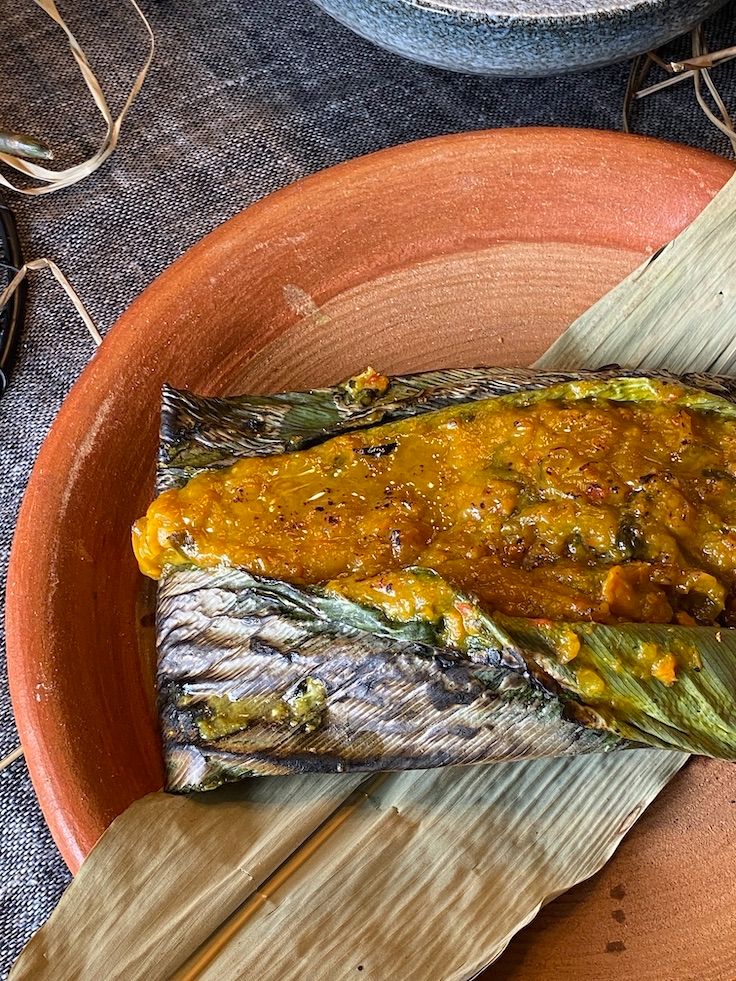
Pais Barramundi
Pais is a Sundanese word that refers to cooking food wrapped in leaves. The origins of this meal are uncertain; however, it is thought to have been brought over by Sundanese immigrants who settled on Malaysian coastlines.
"We use barramundi instead of river fish for this dish. The barramundi is mixed with spices, coconut, and chilli and then, it is wrapped in a leaf cooked over a charcoal fire to impart a unique flavour," explains Wong. This cooking method is notably popular in Pahang, Johor, and Terengganu.
"We use daun lerek (a type of leaf) for this dish. Some may use a more popular leaf, such as banana leaves, but daun lerek lends a unique aroma to the cuisine that is subtle yet necessary to a good pais," Wong notes.






